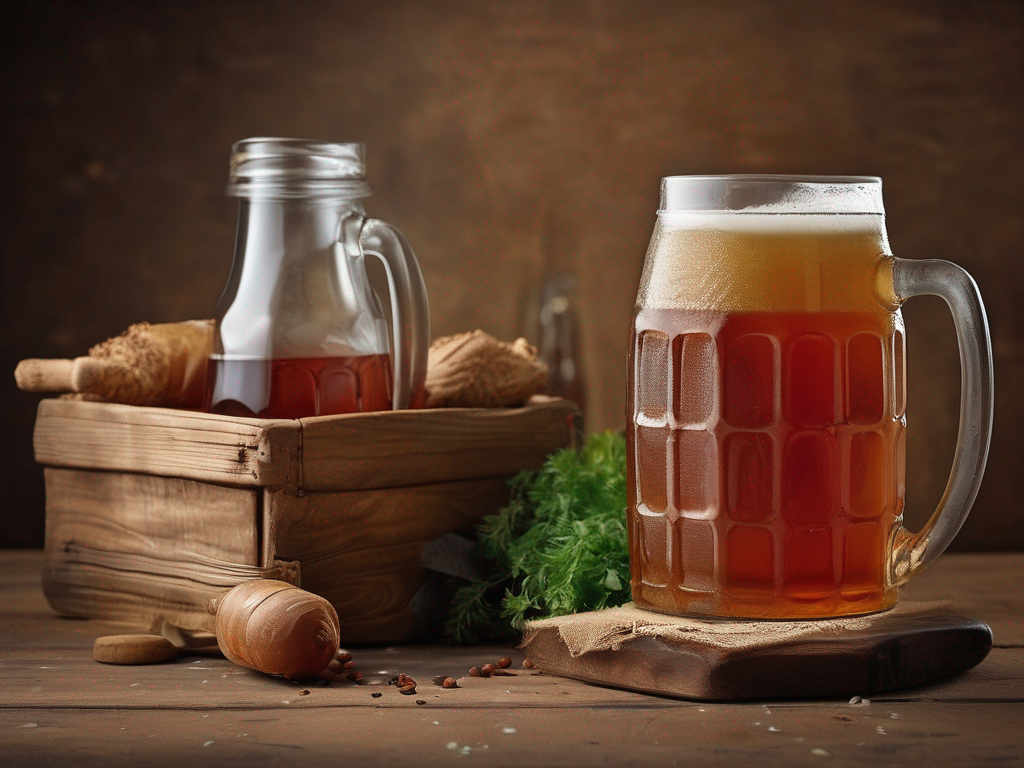
Preserving Kvass: Best Practices for Long-Term Storage
Get Your Free Food Safety Cheat Sheet
30 most common foods with instant answers. Print it and stick it on your fridge—completely free!
Preserving Kvass: Best Practices for Long-Term Storage
Kvass is a traditional fermented beverage that has been enjoyed for centuries in Eastern Europe. Made from bread, water, and various flavorings, kvass offers a unique and refreshing taste that is perfect for hot summer days. However, like any fermented product, kvass requires proper storage techniques to maintain its quality and safety over an extended period. In this comprehensive guide, we will explore the best ways to preserve kvass for a long time, ensuring that you can enjoy this delicious beverage whenever the mood strikes. (Kvass)
Understanding Kvass Preservation
Before delving into the specific preservation methods, it's essential to understand why proper storage is crucial for kvass. Like other fermented foods and beverages, kvass is susceptible to microbial contamination and spoilage if not stored correctly. Factors such as temperature, light exposure, and oxygen can all impact the quality and safety of kvass. By following best practices for preservation, you can extend the shelf life of your kvass and ensure that it remains safe to consume.
Factors Affecting Kvass Preservation
-
Temperature: Kvass should be stored at a consistent temperature to prevent spoilage. Ideally, it should be kept in a cool, dark place away from direct sunlight and heat sources.
-
Oxygen Exposure: Oxygen can promote the growth of harmful bacteria in kvass. To minimize oxygen exposure, it's essential to seal the container tightly and limit air contact as much as possible.
-
Light: Exposure to light can degrade the quality of kvass and lead to off-flavors. Storing kvass in opaque or dark containers can help protect it from light damage.
Best Practices for Preserving Kvass
Now that we understand the importance of proper storage, let's explore the best ways to preserve kvass for a long time. By following these tips, you can ensure that your kvass remains fresh, flavorful, and safe to drink.
1. Proper Container Selection
- Use glass bottles or jars with airtight seals to store kvass.
- Avoid plastic containers, as they can degrade over time and impact the flavor of the kvass.
- Make sure the containers are clean and sanitized before transferring the kvass.
2. Cool and Dark Storage
- Store kvass in a cool, dark place such as a pantry or cellar.
- Avoid storing kvass in the refrigerator for extended periods, as the cold temperature can slow down the fermentation process.
- Keep the kvass away from heat sources and direct sunlight to maintain its quality.
3. Sealing and Oxygen Reduction
- Seal the containers tightly to minimize oxygen exposure.
- Consider using a vacuum sealer to remove excess air from the containers before sealing.
- If using a traditional bottle with a cap, make sure it is securely tightened to prevent air from entering.
4. Regular Inspection and Quality Checks
- Check the kvass periodically for signs of spoilage, such as off-odors, mold growth, or unusual colors.
- If you notice any signs of spoilage, discard the kvass immediately to prevent illness.
- Taste a small amount of the kvass before consuming a larger portion to ensure it is still safe to drink.
5. Proper Labeling and Dating
- Label each container of kvass with the date it was made and the expiry date.
- Keep a record of when each batch of kvass was made and consumed to track its shelf life.
- Rotate older batches to the front of the storage area to ensure they are used before fresher batches.
Conclusion
Preserving kvass for a long time requires attention to detail and adherence to best practices for storage and handling. By selecting the right containers, storing kvass in a cool, dark place, minimizing oxygen exposure, and conducting regular quality checks, you can enjoy fresh and flavorful kvass whenever you desire. Remember to follow proper hygiene practices when handling kvass to prevent contamination and ensure its safety. With these tips in mind, you can savor the unique taste of kvass for weeks or even months after it is made.
For more information on kvass and other traditional foods, visit our kvass page.
By following these guidelines, you can enjoy your homemade kvass for an extended period, ensuring that it retains its flavor and nutritional benefits. Stay tuned for more food preservation tips and techniques on our blog. If you have any questions or additional tips for preserving kvass, feel free to share them in the comments below. Happy fermenting! (Kvass)
Authoritative Food Safety References
These agencies and university labs inform every tip and health precaution we publish.
USDA FoodKeeper – Cold Storage Guidelines
Official refrigerator, freezer, and pantry timelines maintained by the U.S. Department of Agriculture.
Visit USDA FoodKeeperFDA Produce Safety Rule & Grower Guidance
Field-to-fridge handling practices that prevent contamination of fruits, vegetables, and leafy greens.
Visit FDA Produce SafetyCDC Foodborne Illness Prevention Hub
Surveillance-backed guidance on pathogens, symptoms, and steps to reduce foodborne illness risk.
Visit CDC Food SafetyUC Davis Postharvest Technology Center
University research detailing optimal storage atmospheres for produce after harvest.
Visit UC Davis PostharvestPenn State Extension – Home Food Preservation & Safety
Peer-reviewed extension bulletins on safe canning, chilling, and reheating practices.
Visit Penn State ExtensionGet Your Free Food Safety Cheat Sheet
30 most common foods with instant answers. Print it and stick it on your fridge—completely free! Want more? Upgrade to the complete guide with 70+ foods.
Scan your food directly and get instant safety info using our AI-powered camera feature.